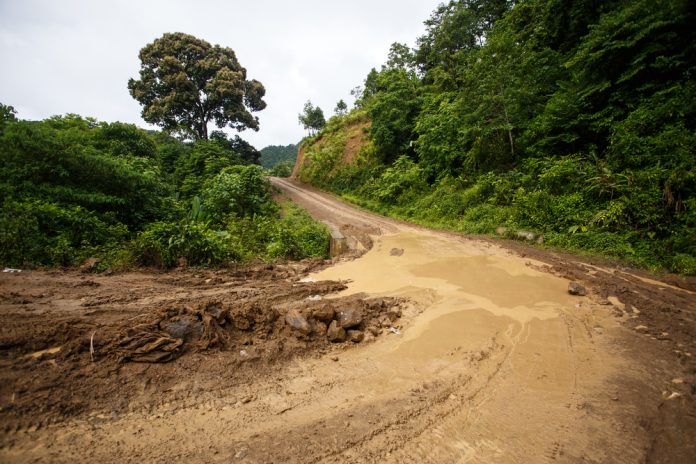The reason most of us enjoy overlanding so much is the pure adventure. From mountains to deserts to forests and fields, we love the outdoors, and all that nature presents to us. But there’s something else that can emerge, and that’s an unexpected emergency far from home and help.
It’s the remoteness of a wilderness location that makes it special, but when hospitals are hundreds of miles away and the nearest store is a two-hour road trip, it all gets complicated.
That’s why experienced overlanders plan, prepare, and pack for the unexpected. Flat tires are the most common overland challenge, followed by running out of gas and a dead battery. But it can get more complicated if there’s a medical emergency, a significant mechanical breakdown, or simply getting lost in the wilderness.
Table of Contents
- Why Survival Skills Matter for Overlanders
- The Survival Mindset & Rule of Threes
- Shelter in Remote Areas
- Water: Finding, Carrying, and Purifying
- Firecraft: Heat, Cooking, and Morale
- First Aid Basics for Overlanders
- Signaling and Rescue
- Building a Tiered Emergency Kit
- Final Thoughts: Plan for the Worst, Enjoy the Best
Why Survival Skills Matter for Overlanders
For some reason, many of us seem to push it when we travel overland. It’s a curious mix of confidence, curiosity, and the assumption that we can handle it. We explore places we hadn’t planned for, we drive up that mountain pass that looks navigable, and we want to see what’s behind that hill or downstream. That’s when things can take a wrong turn.
The simple fact is that anyone who pursues overland adventures needs to be prepared for the unexpected. Basic survival skills top the list, but the ability to prepare and pack properly, and find drinking water from natural sources are important, too. Knowing how to make repairs to a vehicle in the middle-of-nowhere, and a range of first aid skills can make all the difference.
The Survival Mindset & Rule of Threes
The rule of threes is a standard mantra for basic survival. It’s based on the number 3 and goes like this. We can survive for:
- 3 minutes without air
- 3 hours without shelter
- 3 days without water
- 3 weeks without food
The “3’s” define the critical success factors for survival in any situation, anywhere. We’re going to cover these areas in detail and then offer links to articles with more information about some of the key subjects.
And as far as those 3 hours without shelter are concerned, that assumes extreme weather. Many of us have sat for hours outside without harm, but when the weather is below freezing or the heat index gets into the hundreds, a shelter can make all the difference.
Shelter in Remote Areas
There are two obvious solutions to shelter in a wilderness area. Bring a tent or build a shelter from natural materials. There’s also your vehicle, but we’ll get to that later.
Tents
The size and configuration of your tent depend on the number of people in your party and, to some degree, the local weather conditions. In desert areas or mid-summer, a tent with screened windows makes a lot of sense. A rainfly over the tent can help keep things dry in areas where rainfall is common. In winter, a secondary fly surrounding the tent can keep the snow off the main part of the tent and actually help insulate it. And remember, you’ll probably want to store a lot of gear in your tent as well, so make sure you have enough room.
You could even bring along a small secondary tent just for gear storage. Think of it as your campground garage or shed.
For the record, open food in any tent or shelter is a bad idea, particularly in areas with a bear population. Food sealed in a can or Mylar bags is safe, but even then, field mice might find their way into a Mylar bag.
Improvised Shelters
Lean-To Shelter
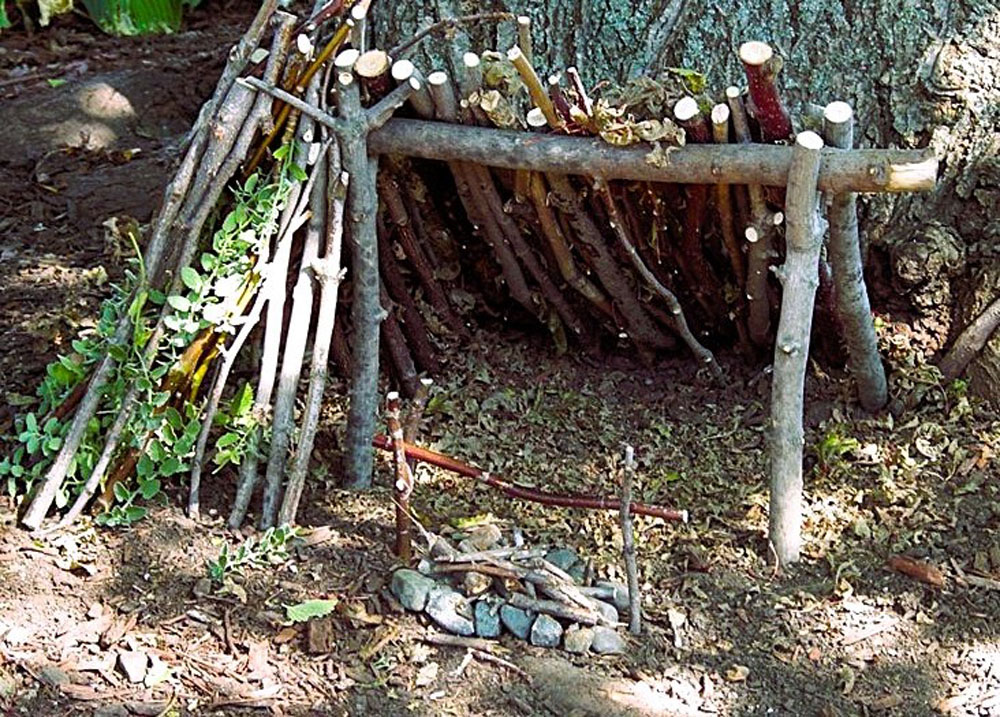
The lean-to is the easiest and most common improvised shelter in a wilderness setting. A fire in front with some logs or rocks behind it to reflect the heat makes a lot of sense in cold weather. The lean-to can be built from branches and roofed with bark, or a tarp can be suspended on a slant to make for a quick shelter from rain and snow. The only downside to a lean-to is the prevailing winds. If the wind is blowing straight at you, the smoke from your fire will fill the lean-to, and it will simply feel colder all around.
A-Frame Shelter
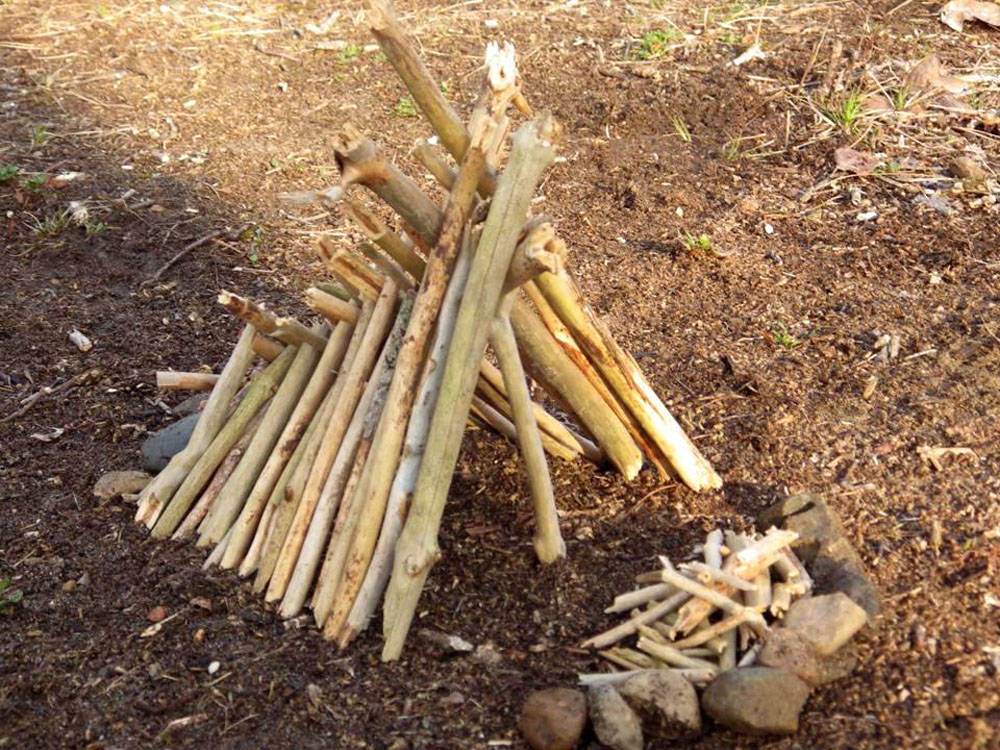
The A-frame shelter is another possibility, and it offers better protection from rain, wind, and blowing snow. It can be fronted with a fire to provide heat. Likewise, it can be roofed with leaves, bark, pine boughs, or a tarp to make it waterproof and snowproof. These shelters can comfortably sleep one and even two if made a little larger. If you have a larger group, you can arrange A-frames around the fire to accommodate the whole group.
Natural Shelters
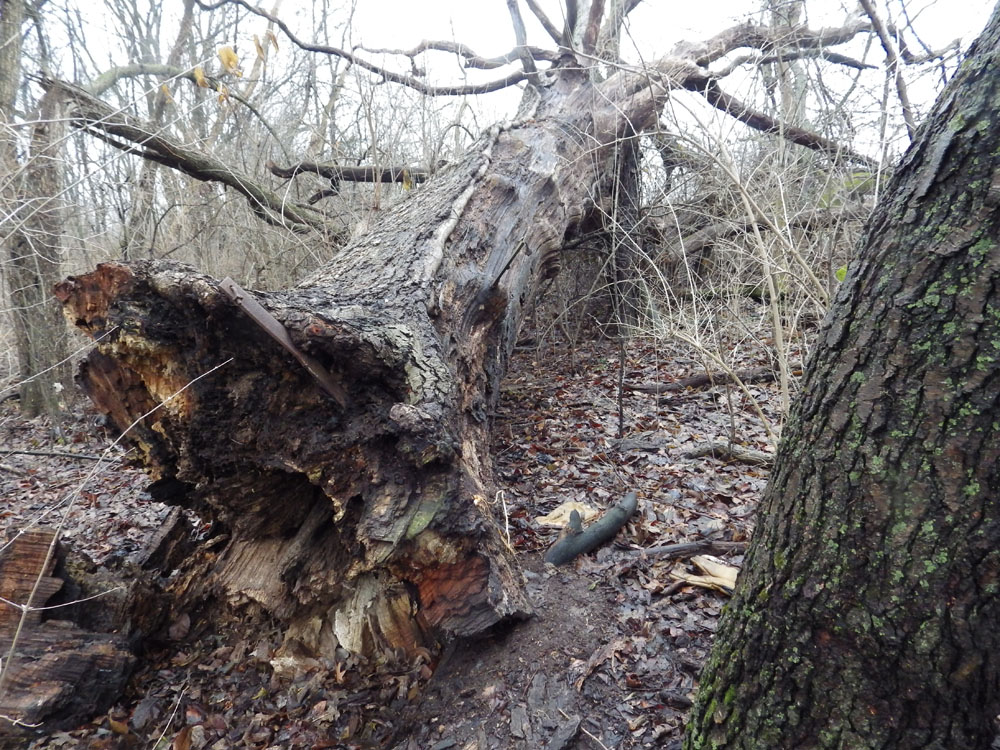
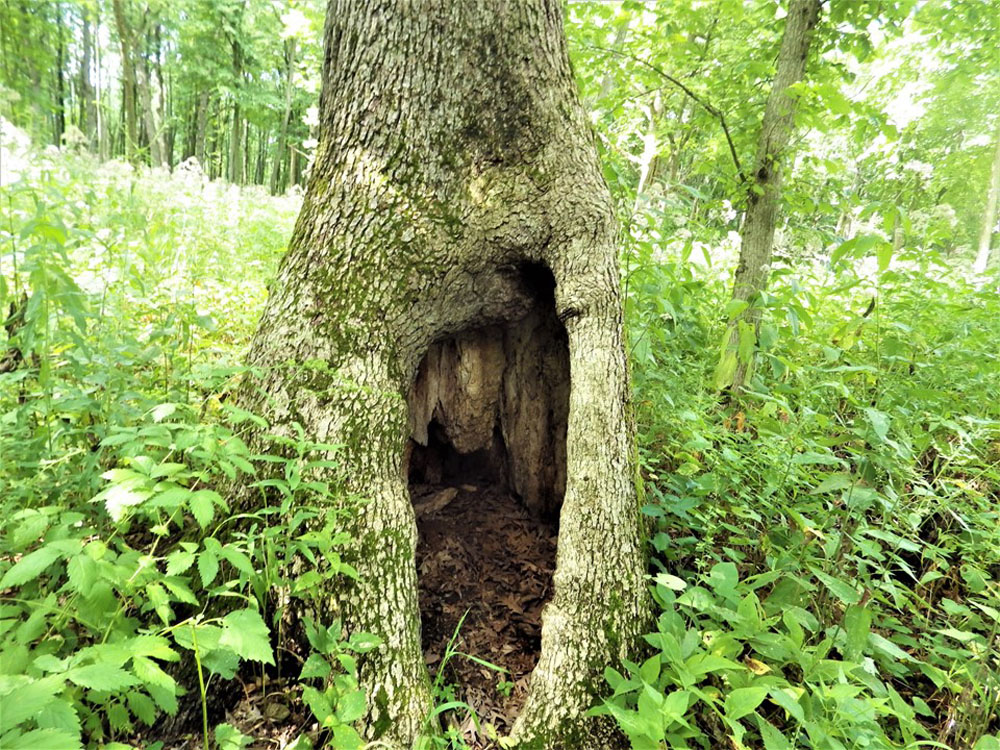
Natural shelters are another possibility, from caves to cliff overhangs to even fallen trees with large exposed roots or gaps in tree trunks offering some cover and an easy structure for additional shelter materials. It’s just a question of looking at the possibilities that nature presents and taking advantage of the natural structures.
Vehicle-Based Survival
If you haven’t been to YouTube lately, there is a flood of videos of people who literally live in their vehicles full-time. If you have enough fuel, you have instant heat or air conditioning. You can recline the seats to sleep, and your supplies are close at hand. If you’re surprised by the weather and simply can’t make camp, subscribe to the standard airplane survival advice; stick with the wreck. Fortunately, you may not be in a wreck, but your vehicle is a quick enclosed space that can protect you from the elements and keep you going until you can figure out your next steps.
Water: Finding, Carrying, and Purifying
Water is everywhere. You just have to know how to find it. Here are some options to consider:
Rainwater Collection
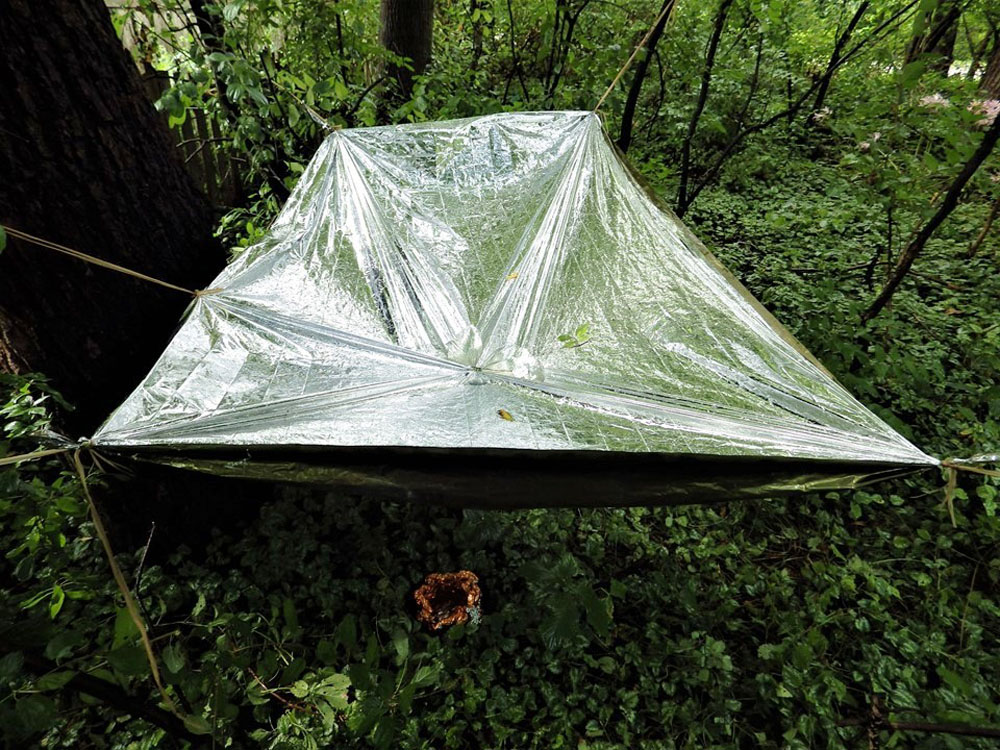
If you have a tarp, a poncho, or even a Mylar emergency blanket, you can suspend them between 4 trees and collect rainwater.
Ponds and Lakes
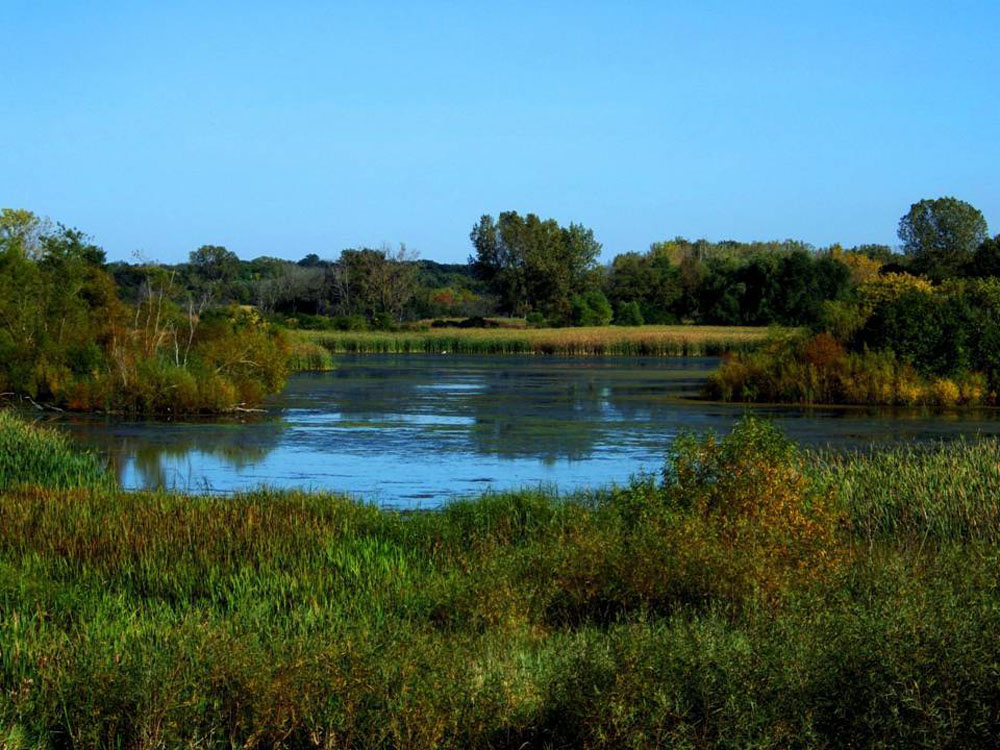
Ponds and lakes are another common source, but remember to try and harvest the water towards the middle of the water column or at least 2 feet deep.
The surface is often covered in airborne pollutants, and you never know what’s on the bottom.
Springs, Creeks, and Rivers

If you find a cold spring, you’re in luck. It might be some of the cleanest water you find in nature. As the springs meander into creeks and rivers, they pick up pollutants, but it’s still water. We’ll touch on filtering and purification, and the link below will take you to more detailed information.
Filtering and Purifying Water
Don’t ever assume that water from a natural water source is safe to drink. It can look clear and clean and even be as ice-cold as a mountain stream and still contain harmful bacteria and microbes.
Boiling water for 3 minutes is the foolproof water purification method, and there are also ceramic water filters and tablets with a chlorine or iodine base that can purify water.
Filtration is another matter and may be necessary with muddy water or any water clouded with particulate matter. Here again, a commercial water filter can remove the particles, but so can a t-shirt or an improvised water filter made from a plastic bottle filled with layers of gravel, sand, and charcoal with a piece of fabric at the bottom.
But once again comes the standard caution. That improvised filter may make the water look clean and pure, but don’t believe it. Boil, treat with water treatment tablets, or run it through a ceramic filter that will physically remove microbes. You have enough to deal with in a wilderness situation without getting sick from polluted water.
As far as storing water is concerned, 5-gallon Jerry Cans or even 1-gallon jugs give you a good way to store and transport water.
Get more details about purifying water in this detailed guide!
Firecraft: Heat, Cooking, and Morale
Say what you will about shelters, a fire in winter is critical to survival. It’s also a basic necessity for primitive cooking, inhibiting the approach of animals in the night, and the simple reassurance of sitting around a fire. The link below covers a range of fires especially designed for inclement weather, but we’ll cover a basic fire setup here called the “Log Cabin Fire.”
The Log Cabin Fire

The log cabin fire is a traditional teepee fire surrounded by split logs stacked upwards like a log cabin. The small teepee fire is started, and the log cabin construction quickly takes to flame.
Maybe the most critical consideration with fire building is the proper collection of tinder and kindling. This is the stuff that burns easily and quickly and acts as a catalyst to get your fire started.
Tinder options include cattail fuzz, peels of birchbark, dry pine needles, shredded fabric, and of course paper.
Kindling is typically defined by small and dry twigs, but even dry Reindeer moss and green pine needles can take your fire to the next stage. The whole idea is to get smaller branches and ultimately larger logs lit and in full flame. Once the fire is started, all you have to do is put another log on the fire to keep it going. Unless the weather is very wet or snowy.
Check out our detailed tutorial on all things firecraft for more fire-making ideas!
First Aid Basics for Overlanders
This is not about your mom’s first aid kit. You need to think beyond the Band-Aids to splints, tourniquets, and even suture kits. And as a reminder, don’t forget that first aid manual in case you encounter something new out in the middle of nowhere.
A good solution is an expedition-level medical kit. It’s basically what paramedics use in an emergency, and you can find them online. They’re relatively compact (a small duffel bag) and invaluable in a medical emergency.
Signaling and Rescue
Here’s another telegram. Your cell phone can save you. Take the time to download some navigational apps, a compass app, and map apps, and it makes sense to bring along a portable solar power bank for recharging.
You can extend the range with antennas that connect to your phone or go so far as to buy a Personal Location Beacon (PLB), which sends distress signals via satellite to alert emergency services to your predicament.
This detailed guide explains exactly how to signal for help in an emergency.
Building a Tiered Emergency Kit
Some of us don’t have a lot of space in our vehicles, and some of us live on a tight budget. It always varies, but there are some basics you should at least have, and some plus-ups if you can afford them or have the room in or on your vehicle.
On a fundamental level, it’s about emergencies that can affect you or your group and the vehicle taking you miles and miles into the middle of nowhere. To some degree, it gets back to the rule of 3’s related to water, food, and shelter, but it also applies to equipment breakdowns and repairs.
Maybe most important are communication options. Say what you will about our cell phone society, but if you can simply call for help and let them know where you are, you’re way ahead of the game. Here’s a tutorial on how to plan, prepare, and pack for an overland emergency.
Final Thoughts: Plan for the Worst, Enjoy the Best
The fundamental message here is to simply plan ahead: where are you going, who’s going with you, how long do you plan to be there, and what could happen based on geography/weather/and time of year?
You should also think about bringing your vehicle in for some routine tune-ups and system checks to make sure everything is working before departure. The whole idea of overlanding is to enjoy a true adventure. What’s critical is to make it an enjoyable adventure rather than a desperate tale of survival and pain as a result of poor planning.
Hero photo by Sam DCruz via Shutterstock




